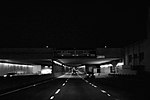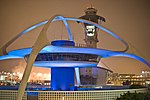JetBlue Flight 292
2005 in CaliforniaAccidents and incidents involving the Airbus A320Airliner accidents and incidents in CaliforniaAviation accidents and incidents caused by undercarriage malfunctionAviation accidents and incidents in the United States in 2005 ... and 4 more
JetBlue accidents and incidentsLos Angeles International AirportSeptember 2005 events in the United StatesUse mdy dates from December 2017

JetBlue Flight 292 was a scheduled flight from Bob Hope Airport in Burbank, California, to John F. Kennedy International Airport in New York City. On September 21, 2005, Captain Scott Burke executed an emergency landing in the Airbus A320-232 at Los Angeles International Airport after the nose gear jammed in an abnormal position. No one was injured.
Excerpt from the Wikipedia article JetBlue Flight 292 (License: CC BY-SA 3.0, Authors, Images).JetBlue Flight 292
Sepulveda Boulevard, Los Angeles
Geographical coordinates (GPS) Address Nearby Places Show on map
Geographical coordinates (GPS)
| Latitude | Longitude |
|---|---|
| N 33.935833333333 ° | E -118.39722222222 ° |
Address
Sepulveda Boulevard
Sepulveda Boulevard
90009 Los Angeles
California, United States
Open on Google Maps








